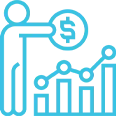
Simplifying Financial Confusion
LEARN CASH FLOW HACKING TO REACH FINANCIAL FREEDOM
Used by 90% of millionaires to reach their financial goals 4x faster

Achieve Financial Freedom Through Cash Flow Hacking

Increase Your Lifestyle While You Build Your Wealth

Position Yourself to Thrive in Market Downturn
YOU SHOULD NOT FEEL OUT OF CONTROL ABOUT YOUR FINANCIAL STRATEGY

Have easy access to your money in case of emergencies and opportunities

Use the investment strategy 90% of millionaires use

You deserve a clear plan to consistently grow your money and avoid market uncertainty

Have a guide and advisor that has your best interest in mind

Do not overpay in taxes

Stop guessing at the best vehicles to protect and grow your money

Explaining The Different Types Of Cash Value Life Insurance
This article is a written adaptation of the video available on our LIFE180 YouTube channel.
Intro to different types of cash value life insurance
I frequently discuss how whole life insurance can be an incredible and foundational asset for individuals. Many people online are talking about infinite banking, whole life insurance, indexed universal life, and various methods of using life insurance as an investment or asset. Everyone seems to have their unique perspective on the topic, discussing it in different ways.
As you navigate the process of determining which type of whole life or cash value life insurance policy suits your needs, it's essential to consider your specific situation, goals, and requirements. Which policy is best for you? How do you make that decision? Whether you're choosing for yourself or advising clients, understanding the various parameters and factors involved is crucial to making the best choice.
In this article, I aim to break down the various types of cash value life insurance, as not all whole life insurance policies are created equal. Similarly, not all cash value life insurance is the same.
Let's explore the different types of cash value life insurance.
Full Pay Whole Life Insurance
First, let's discuss full pay whole life insurance. This type of policy is a whole life contract that endows at 120 years old. While it's unlikely that anyone expects to reach that age, it's essential to understand how this policy works. When you purchase a full pay whole life insurance policy, the fees and costs of insurance are spread out over the entire duration of the contract.
Many people prefer policies that mature at 120 years old because the annual cost of insurance (COI) is generally lower. This reduction in COI occurs because the costs are spread out over a more extended period, making the policy more affordable annually.
For example, if you purchase a full pay whole life insurance policy at 40 years old, you have 80 years to pay for the coverage. If you have a million dollars in death benefits, that amount is spread out over the 80-year period. This principle applies to all whole life insurance policies. A full pay policy is considered the classic whole life insurance option that many people choose.
The downside of a full pay whole life policy is that you're always responsible for paying the premiums. This can become challenging, especially if you retire at 65, as it means you would have 55 years of potential premium payments without a regular income. To address this issue, companies have developed various types of policies to offer more flexibility.
L95 Whole Life Insurance Policy
Different companies offer alternative policies, such as the Life 95 (L95) policy. This type of policy requires premium payments until the age of 95. Essentially, you are responsible for paying the premiums until that age, providing a shorter payment period compared to a full pay whole life policy.
Returning to the example of a 40-year-old purchasing a million dollars in insurance, with an L95 policy, the cost of insurance is spread over a shorter period, up to age 95 rather than 120. As a result, the annual cost of insurance is higher because the expenses are compressed into a shorter time frame, even though the premiums remain level throughout the policy's duration.
As a result of compressing the premium payment period, the cash value may not accumulate as effectively early in the policy. To address this, some companies offer policies with varying premium payment terms, such as pay-to-75 or pay-to-65. While these policies may go by different names, they all provide alternative payment structures to suit different needs.
Limited Pay Whole Life To Age 65 or Age 75
Some companies offer policies with specific names or terms, such as "select" products, which provide various flexible options. The choice of premium payment structure depends on the company and the policy itself. Many people find the pay-to-65 or pay-to-75 options particularly appealing.
For those planning to retire at 65, having a policy fully paid up by that age offers significant peace of mind. It eliminates the stress of maintaining policy premiums or managing cash flow during retirement, which can be a major benefit.
In contrast, with an L95 policy, when you reach age 65, you might be able to illustrate a scenario where no additional money is required from your policy. However, you'll still need to pay premiums for another 30 years. At age 65, you could choose to convert the policy to a Reduced Paid-Up (RPU) status, where the death benefit is reduced, and no further premiums are required. However, opting for an RPU often means losing the living benefits associated with the policy in most cases.
Another option is to use premium offsets through surrenders and policy loans. However, if you plan to use the policy as a volatility buffer, for retirement income, or as collateral for loans, such as for real estate investments, you’ll want to access the living benefits. Relying on premium offsets can pose risks, as it might impact the policy’s performance and the availability of its living benefits.
While using premium offsets is a viable option, it's important to recognize that it carries inherent risks. There’s no “free lunch” in insurance; every strategy comes with trade-offs. This is why I prefer the pay-to-65 and pay-to-75 options. They provide more control and certainty, allowing you to manage your policy and its benefits more effectively.
Opting for the pay-to-65 or pay-to-75 policies may make the insurance slightly more expensive. However, if designed correctly, these policies can still be highly efficient. They may not match the efficiency of an L95 policy, but as I always emphasize, you can’t address long-term issues with short-term thinking.
The trade-off of sacrificing a small percentage of liquidity in the short term for greater control during a 30-year retirement period is, in my view, well worth it and should be seriously considered by everyone.
10 Pay, and 20 Pay Whole Life Insurance
Now, let’s discuss limited pay policies, which are crucial to understand. The pay-to-65 and pay-to-75 options can be considered variations of limited pay policies, as is the L95. However, when referring to pure limited pay policies, I mean options with fixed payment periods regardless of age, such as 10-pay, 15-pay, and 20-pay policies. With these, you commit to paying premiums for a specified number of years (10, 15, or 20) depending on the policy you choose.
Viewing it through this lens, limited pay policies can be quite powerful. For instance, if you purchase a million-dollar life insurance policy, the cost of insurance is spread over a fixed period, such as 10 years. This approach allows you to pay for the insurance within a shorter timeframe, making it an attractive option for many.
The challenge with a 10-pay policy is that, while it can be very efficient over a 10-year period, the initial liquidity may be somewhat lower. However, as with many long-term financial strategies, short-term sacrifices can lead to significant long-term benefits.
Committing to fund a policy over 10 years can be more advantageous than traditional savings accounts or banks, even though you might experience reduced liquidity in the first few years. The same principle applies to 15-pay and 20-pay policies, where the efficiency and benefits are spread over 15 and 20 years, respectively.
The main challenge with 10-pay policies is that they can be problematic if not aligned with your financial situation. While a large 10-pay policy can be effective if you have substantial cash flow, it’s crucial to ensure it meets all your needs. If you're able to manage the higher premiums and see the long-term benefits, it can be a sound strategy. However, without sufficient cash flow, the short-term impact on liquidity might outweigh the benefits.
The challenge arises when people opt for small 10-pay policies with a short-term mindset. Often, individuals choose these policies without fully understanding their purpose or the role they want the policy to play in their financial strategy. This lack of clarity can lead to difficulties, as they may not be prepared for the implications of such a policy or how it fits into their overall plan.
With a 10-pay policy, once you’ve completed the 10-year payment period, you cannot make any additional premium payments. After the 10 years, you are committed to the policy as it stands, and no further contributions can be made to it.
The challenge with 10-pay policies is that most of the fees and expenses are concentrated in the first few years, typically the first two to five years. After this period, if you evaluate the policy based on performance, growth, efficiency, and tax benefits, a well-structured whole life policy becomes one of the most advantageous assets available. In years six and beyond, its benefits can significantly outweigh those of other financial products, with no close comparison.
The challenge is that many people struggle to look beyond the first few years of a policy, typically years one through five, when inefficiencies and initial costs might make it seem less favorable. During this period, you might experience reduced liquidity due to upfront expenses. However, it's essential to recognize that these early years are just a phase, and the true value of the policy often becomes evident after this initial period.
Many people find it challenging to look beyond the initial inefficiencies and prefer to minimize the payment period. They might be drawn to a 10-pay policy because it offers the advantage of no payments after 10 years. While this can be beneficial for someone nearing retirement, such as a 55-year-old planning to retire at 65, it may not be ideal for a younger individual who plans to work until age 60.
By the time you reach years seven, eight, nine, and ten, and fully understand the value of your policy and its growth potential, you'll find that having the ability to continue funding it could be more advantageous. If you have a 10-pay policy, you lose the option to keep contributing and might need to start a new policy later. While you can certainly obtain another policy in the future, it’s important to consider the long-term implications.
If I were young and considering a 10-pay policy, I would approach it differently to ensure flexibility and security. I would suggest using a 10-pay policy in a way that maximizes its efficiency and complementing it with a convertible term policy. The reason for adding a convertible term policy is to safeguard against the risk of becoming uninsurable during the term period. If you encounter a health issue, such as illness, cancer, an accident, or disability, that makes you uninsurable, the convertible term policy allows you to convert it to a whole life policy without additional underwriting, providing crucial protection.
I frequently hear from people who regret not having access to more insurance. They often purchased a non-convertible term policy that is now about to expire, leaving them unable to obtain new coverage due to changes in their health. This situation is all too common, and it underscores the importance of having a convertible term policy as a safeguard.
Make no mistake: if you buy a term policy and fall into a situation where you can no longer obtain additional insurance, you’re stuck with the coverage you have. That’s why I strongly recommend opting for a convertible term policy. For young individuals, especially, it’s beneficial to secure an extra million dollars in convertible term coverage if you qualify. At age 35, this can cost around $45 to $60 per month. Why not take advantage of this option? By doing so, you not only get the coverage you need but also lock in the ability to convert it later, gaining access to living benefits and other valuable features.
At the end of the 10 years, if you decide you want to continue with more coverage, you can convert your convertible term policy and repeat the process. This makes it a very powerful tool for maintaining and expanding your insurance coverage. For any limited pay policies, I strongly recommend adding a convertible term policy to ensure you have the flexibility and security you might need in the future.
So, to summarize, we’ve covered various policy options, including the L95, pay-to-65, and limited pay policies such as the 10-pay, 15-pay, and 20-pay. We’ve also discussed the ability to convert full pay policies to Reduced Paid-Up (RPU) status and utilize the premium offset feature.
Ultimately, you can use the Reduced Paid-Up (RPU) option with any policy, including the pay-to-65 and pay-to-75 options, anytime after year seven. This flexibility highlights the importance of control in your policy. If you're uncertain about your future cash flow, consider opting for a 10-pay or even a 12-pay policy, and then convert it to RPU if needed. This approach provides a balance between commitment and flexibility, allowing you to adjust based on your financial situation.
However, there are some downsides to consider. If living benefits are crucial to you, which I highly recommend giving more weight to, you might want to be cautious. The value of living benefits is immense, and there’s a significant likelihood you’ll use them in retirement, more than you might anticipate. Don’t underestimate their importance, as they can be a vital part of your financial strategy.
Indexed Universal Life Insurance Compared To Whole Life Insurance
When people ask why I caution against using Indexed Universal Life (IUL) for infinite banking, or why I express concerns about IULs in general, it’s important to understand my reasons. Let me explain why I believe there are significant issues with IULs, particularly regarding control and other critical factors.
Full pay whole life insurance means you’ll have a cost of insurance every year. The advantage of this type of policy is that the cost of insurance is level throughout the policy term. However, a downside is that if you live to 120, you’ll continue to incur this cost of insurance for up to 55 years into retirement.
The downside of full pay whole life insurance is the long duration of the cost—up to 55 years if you live to 120. However, the advantage is that the cost of insurance is level and predictable, which provides stability. Similarly, with policies like the L95, you’ll have premiums for a set period, such as 30 years, but the policy remains controlled and safe.
A key benefit of whole life insurance is the flexibility it offers; you can reduce the policy to paid-up status, eliminating all costs and expenses, or use the premium offset feature to manage costs more safely. In contrast, Indexed Universal Life (IUL) policies lack this level of control, making them less adaptable to changing needs.
With annual renewable term (ART) insurance, which is often used in Indexed Universal Life (IUL) policies, you benefit from low costs when you’re young. For example, a 35-year-old may find ART to be inexpensive because it’s based on one-year term rates. While it's true that ART can be cheaper than whole life insurance on a yearly basis, this approach often reflects short-term thinking.
You can’t address long-term challenges with a short-term mindset. Although ART might seem affordable initially, it becomes less cost-effective as you age, and you’ll continue to pay these rising costs into retirement. This short-term savings often leads to higher costs in the long run.
It’s often claimed that with Indexed Universal Life (IUL) policies, you’ll initially have an increasing death benefit while you’re funding the policy. Then, as you approach retirement, you can switch to a level death benefit, which means the net amount at risk and the insurance amount will decrease, thereby reducing the cost of insurance over time.
The issue with this approach is that it’s not as straightforward as it sounds. In retirement, many people use Indexed Universal Life (IUL) policies to generate income, which complicates things. When you take income from the policy and experience negative investment years, the net amount at risk can actually increase.
As you age, this can lead to a significant rise in insurance costs. Since IULs use annual renewable term rates, the cost of insurance can jump sharply from one year to the next, particularly as you get older, leaving you with less control over the policy’s expenses.
The bottom line is that you can never pay up an Indexed Universal Life (IUL) policy. Unlike whole life insurance, which allows for policies to be fully paid up, IULs require ongoing payments and the cost of insurance continues to increase annually. By the time you reach 85, the cost of insurance can exceed $35,000, even for a relatively modest net amount at risk, such as $250,000. This represents a significant financial burden, with fees growing substantially as you age.
Why I Like Whole Life Insurance Over Indexed Universal Life Insurance
When people claim that Indexed Universal Life (IUL) insurance is cheaper than whole life insurance, they’re referring to the initial 15-20 years. However, for the lifetime of the policy, which is crucial since we’re not investing in an IUL for short-term benefits, the costs can be significantly higher.
IULs often come with severe surrender charges compared to whole life policies and escalate in expense as you age. Therefore, when evaluating cash value life insurance, I generally advise against IULs. If you follow my YouTube channel, LIFE180, you’ll understand why I emphasize this perspective.
I always prefer one of the whole life policy options that allow for flexible payment terms, such as the pay-to-65 or pay-to-75 policies. These pseudo-limited pay policies offer significant advantages, including built-in flexibility. Additionally, we can get creative with different premium offset strategies that allow the policy to be fully paid up earlier, by age 65 rather than 95. This approach provides a more manageable financial plan, especially as you approach retirement.
Choosing policies like pay-to-65 or pay-to-75 reduces the stress on the policy over a shorter period, giving you greater control and flexibility. This approach allows you to use your policy more effectively as a volatility buffer and for other needs during retirement, enhancing your financial stability and options.
For me, these are the key factors I consider when evaluating different types of cash value life insurance. It can be confusing because many people might suggest simply opting for a whole life policy or an Indexed Universal Life (IUL) policy. However, I strongly advise against IULs.
Even within whole life insurance, not all policies are created equally. It's not as straightforward as just choosing a policy from MassMutual, Guardian, Penn, OneAmerica, Lafayette, or any other provider. Each company offers a range of products with varying features, and what works well for one person might not be the best fit for another.
The key is to clearly understand your goals and objectives and how different policies align with them. Don’t get caught up in the notion that you need to choose a policy from a specific company simply because they are the largest or one of the big four.
All mutual life insurance companies operate under similar rules and guidelines for their general fund investments. What matters most is finding a policy that best fits your personal needs and financial situation, rather than focusing solely on the company’s size or reputation.
Personally, I favor some of the smaller mutual insurance companies. My next policy will be with one of these smaller firms because I believe their nimbleness is advantageous in the current environment. Larger companies, with their massive general funds, can become market movers and may struggle to make significant shifts quickly.
In contrast, smaller mutual companies can adapt more readily to changes. This adaptability is why I’ve been recommending smaller companies recently, as they might offer more flexibility and responsiveness in today’s evolving market.
I hope you found this information valuable and that it provides you with clearer insights into which life insurance options might be best for you or for your clients. If you're an agent considering a shift from Indexed Universal Life (IUL) to Whole Life Insurance, or if you're new to selling Whole Life Insurance and want to learn more, we launched an IMO (Independent Marketing Organization) last year. I don’t frequently discuss this, but if you're interested in exploring this further and learning how to effectively sell Whole Life Insurance, please visit the link below to set up an Agent Interview.
We are actively growing our team and offer some of the best training available. If you appreciate our YouTube content and are an agent looking to join a supportive and well-trained organization, we’d love to have you. Our focus is not on recruiting or pushing you to sell to your family before you're fully informed. Instead, we provide comprehensive support and training to help you succeed. If you’re interested in being part of a team that values education and effective training, visit the link below to set up an agent interview.
That’s why I created the LIFE180 Insurance Agency, to help agents become fully knowledgeable and skilled before they start selling insurance. As you can see from the content I create, I’m passionate about ensuring you understand what you’re doing before giving advice or making sales. Our goal is to make sure you’re well-prepared and confident in your expertise, so you can provide the best service without the risk of giving out incorrect advice.
So, that’s it! I hope you found this information valuable. If you did, please share it, this is the best way to support my content. Until next time, have a blessed and inspirational day!
HOW TO START TAKING CONTROL OF YOUR FINANCES BY MAXIMIZING YOUR CASH FLOW AND PROTECTING YOUR ASSETS

1. Schedule Your Free Clarity Call

2. Create a Free Customized Plan

3. Get Guide to Financial Success
GET YOUR FREE COPY TO STOP USING OUTDATED RETIREMENT STRATEGIES
Cash Flow Hacking teaches you to:
Protect Your Investments
Thrive in bad markets
Reach financial freedom faster

ARE YOU LOOKING FOR:

Cash Flow Hacking teaches you to:
Security to protect your money
Increased cash flow and lifestyle
Inflation protection
Financial certainty in all economic environments
A reduction in taxes
Safe and fast access to your money with no penalties
WHO IS THIS PROGRAM FOR?

People looking for an alternative
Are you looking for alternatives to Wall Street’s “buy and hold” strategy that takes 40 years with uncertain results? Our Cash Flow Hacking strategies provide you the building blocks to get started on the right foot

Passionate Entrepreneurs
Are you looking for a financial strategy that will take your best assets (you and your businesses) and multiply their potential? Our Cash Flow hacking strategies will teach you how to invest for the future without sacrificing building your business

Real Estate
Investors
Are you a real estate investor who is burned out from being a landlord or playing the fix-and-flip game? Our Cash Flow Hacking strategies will provide you with the system to create predictable wealth AND give you the freedom you are looking for.
YOU DESERVE PEACE OF MIND AND A PLAN THAT WILL PROTECT YOUR FAMILY AND GROW YOUR WEALTH
Today you need to be more savvy than ever if you try to go at it alone.
Losing money to inflation, taxes, and just poor investment strategies is leaving you frustrated, feeling out of control and not knowing where to turn. To add to the problem, the market is flooded with advisors who have outdated advice that does not place your best interests first, but instead focuses on charging you a fee that creates guaranteed cash flow for them.
NOT YOU
We believe this is wrong and that your security and best interests should be placed first. We believe you should be in a position where you control your money, your money doesn't control you. We understand because we talk with hardworking people everyday that are losing money in the markets based on old information and feel like they are guessing at the best course of action.
We created the Cash Flow Hacking plan to help you have security and control of your money to take advantage of life's opportunities because you deserve peace of mind with your wealth. The old way of planning for retirement of… Go to school Get a job & save as much as you can in your 401k and mutual funds...is broken.
You have been lied to. Think about it, where else in life does someone tell you that the most certain way to achieve your desired result is to take on more risk? The math just doesn't work, and the results are showing in our country and world. Did you know that 90% of millionaires in the United States have 1 asset in common?
Hint: it's not stocks or mutual funds (and no...it's not crypto) How much sense does it make for you to work hard, save money, reduce your current lifestyle (because that's what you are doing when you save for the future - taking money you could use on lifestyle today and delaying gratification to a future unknown time), and hope that whatever you are doing will work three to four decades from now? If you're thinking, "not much sense at all…", you are in the right place.
With over 50 years of experience on our team, we have worked with thousands of individuals and families to achieve financial freedom faster and with more predictability by helping them invest for Cash Flow.
How does the Cash Flow Hacking Plan work? 1. Take the Cash Flow Hacking Challenge 2. Complete the LIFE180 X-Ray and determine what your Freedom Number is 3. Work with a Cash Flow Hacking expert to provide you a customized plan
The customized Cash Flow Hacking plan will give you clarity on where you are now, where you want to go (and in what time frame), and what you need to do to get there predictably.
We value and commit to you: We believe you deserve the best financial education and guidance We believe financial decisions should not be rushed but be well thought out with a plan We believe you should be in control of your money We believe we earn your trust through time, education, and proper due diligence Without a proper plan and guidance, your money can be lost to taxes, inflation, and bad investments You deserve more with the most up-to-date strategies to mitigate your risk, control your money, and earn stable returns regardless of the market Schedule a call here to attain your LIFE180 Financial X-Ray now or get started with the Cash Flow Hacking Challenge for free.
I am interested in...